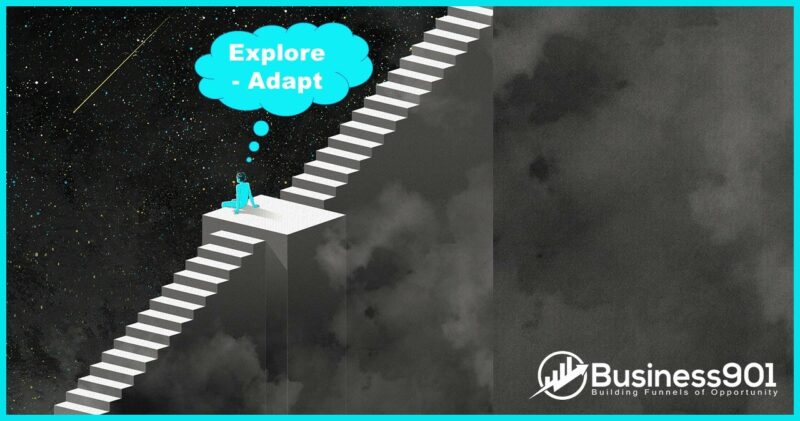In the Sales and Marketing arena, we are exploring new propositions and environments as the main thrusts of our activity. I have found PDCA to be limiting and somewhat challenging to take people on the path of exploration.
I was introduced to EDCA (E=Explore) it seems like a decade ago by Graham Hill but it never really was adopted by many in or out of the Lean Community. I think Jim Highsmith said it best when he says that Plan-Do promotes linear thinking. Even though as Lean folks know – Plan is really about developing a hypothesis, in/out of the community I believe it still fosters a natural progression of linearity and the idea of finding the root cause.
Read more on that: Are We Wasting Time Finding Root Cause https://www.linkedin.com/posts/joedager_innovation-prototyping-experimentation-activity-6576790982220668928-JJUQ or Is the Need for Problem Solving Fading? https://www.linkedin.com/posts/joedager_strengthbased-problemsolving-sixsigma-activity-6584770259448840193-cCUN
In my experience, I have seldom seen a straightforward strategy for startups and often existing companies for scaling. It is a matter of building on both human and digital relationships. The concept of Exploring and Adapting is always working from what we know through concept-based inquiry and generalizing on what I might call our marketing experiment/campaign or in a bigger way marketing space or cluster. With this approach, we venture into the unknown. We challenge ourselves and our partners to look for new opportunities, prospects, spaces in that grey area.
In his book Agile Project Management ( https://amzn.to/349HbzH ), Highsmith discusses the use of the “Speculate” aspect of iteration planning. He says in the book,
Using the term “speculating” rather than “planning” has a similar effect. When we speculate, we are not prescribing the future, but rather hypothesizing about it. And, to those who practice the scientific method, we hypothesize and then run experiments to test that hypothesis— exactly what happens in agile iterations. Speculating also conjures up a vision of a group musing about the future instead of one rushing to document.
I especially like the terminology he uses moving from Plan-do, which, as said, just about always results in a linear, waterfall approach and the more traditional names of Initiate, Plan, Define, Design, Build, and Test. Instead, he uses Envision, Speculate, Explore, Adapt, and Close. The outline is further explained below:
- Envision: Determine your marketing vision and objectives and constraints, your community, and how your team will work together.
- Speculate: Develop the capability and/or feature-based launch to deliver on the vision.
- Explore: Plan and deliver running tested stories in the short iteration, constantly seeking to reduce risk and uncertainty.
- Adapt: Review the delivered results, the current situation, and the team’s performance, and adapt as necessary.
- Close: Conclude the launch, pass along key learning, and celebrate or return to Speculate or Explore.
This thinking led me to become less concerned about flow and trying to manipulate or push someone through a sales funnel at a faster pace. We seldom know what waste was in sales and marketing (Wannamaker). I concentrated less on the flow, but more on the aspect of the rhythm. Continuous short iterations to improve the value of the offering. We are not waiting or trying to find the perfect scenario or solve root-cause. We build the Explore-Adapt Cycle as an ongoing process. Customer relationships need to be as collaborative as possible. Customers then can define the capabilities needed to provide value. When that scenario can no longer be adapted or improved upon, the life of that marketing effort, think Speculation, is nearing the end or exhausted. Or is you have read other posts of mine -totally automated. ;)
This effort enables customers to view the value they need and give the opportunity for both to adapt and iterate forward. Your sales and marketing team must always be in contact with the customer and continuously asking: Is what we are doing providing value in our customer decision making or efforts to complete the job they need to be done?
I encapsulated this in a format called the Highsmith A3 which I use with customers, typically through the use of a Trello Board vs. the A3. The Explore-Adapt are separate cards on the board that we move across.
Download the Highsmith PDF: https://business901.com/storage/2015/11/AGP-Highsmith-A3.pdf
Highsmith, Linda Luu, and David Robinson have just written a new book called the EDGE: Value-Driven Digital Transformation: https://amzn.to/2s7BRzk. It reinforces some of my thoughts that are outlined above.


